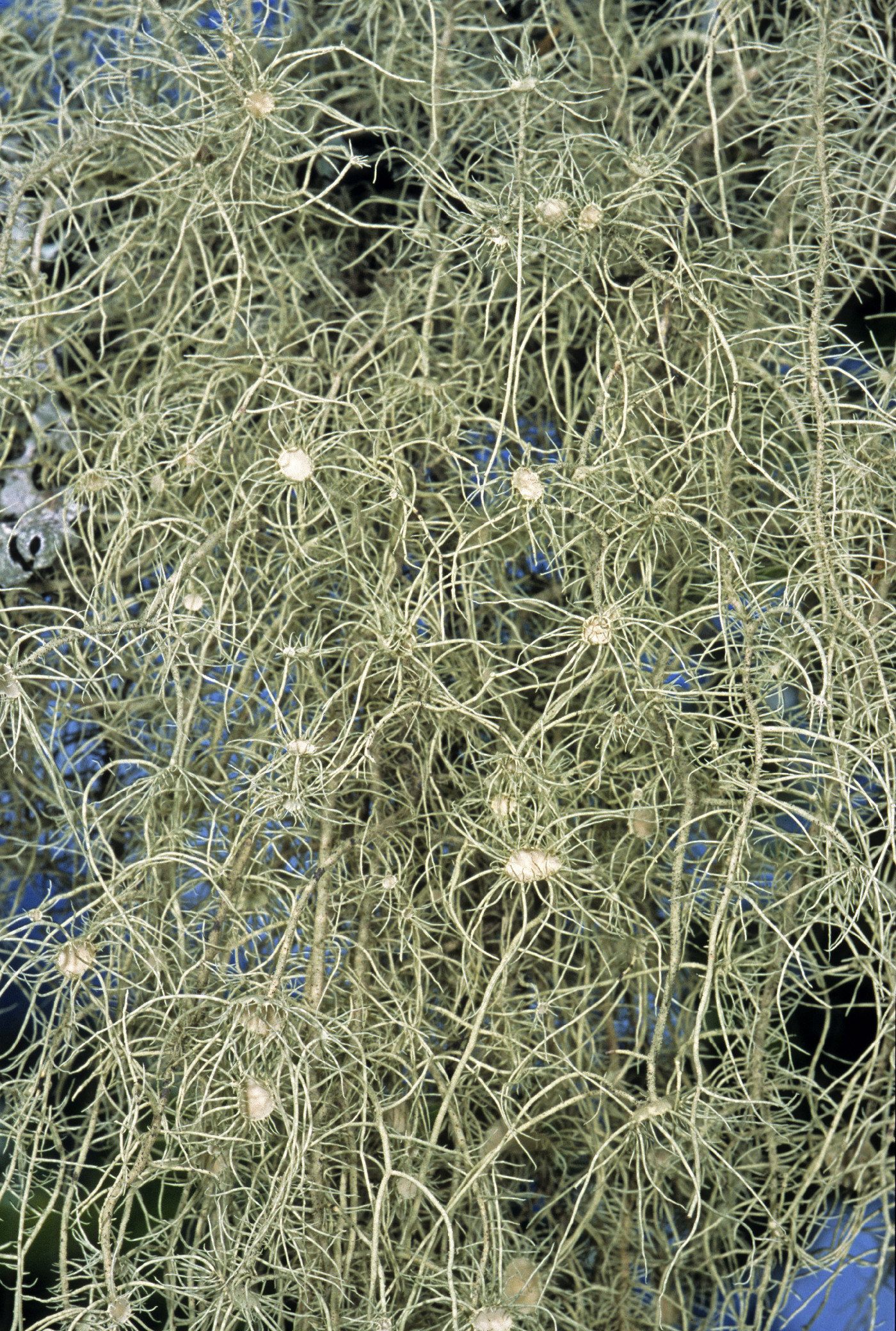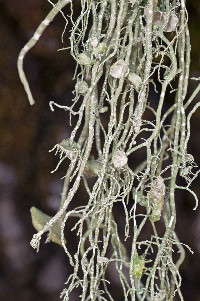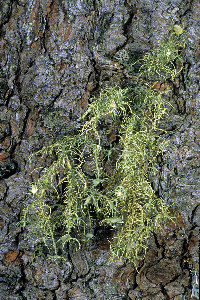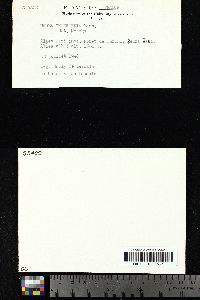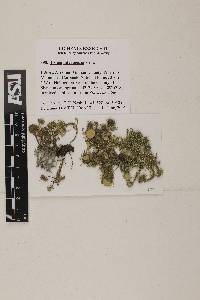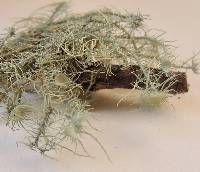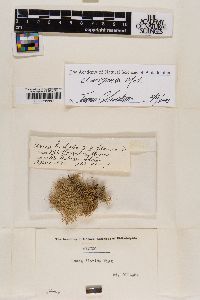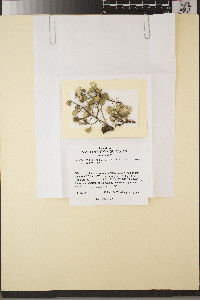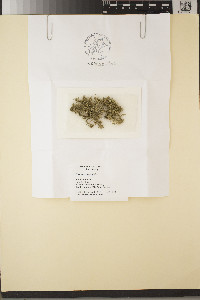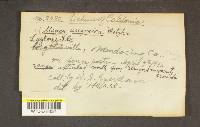
Consortium of Lichen Herbaria
- building a Global Consortium of Bryophytes and Lichens as keystones of cryptobiotic communities -
- Home
- Search
- Images
- Species Checklists
- US States: O-Z >
- US National Parks
- Central America
- South America
- US National Parks
- Southern Subpolar Region
|
|
|
|
Family: Parmeliaceae
[Usnea arizonica Motyka, moreUsnea barbata var. intermedia A. Massal., Usnea retifera Motyka] |
Nash, T.H., Ryan, B.D., Gries, C., Bungartz, F., (eds.) 2007. Lichen Flora of the Greater Sonoran Desert Region. Vol 3. Thallus: shrubby to subpendant, 2-12 cm long, compact to loose branching: anisotomic-dichotomous basal part: usually black on a narrow and irregular zone, rarely conspicuously blackened on 2-4 mm, sometimes concolorous with the branches, with few indistinct annular cracks branches: irregular; lateral branches: not narrowed at attachment point, but sometimes ±fusiform; annulations usually few (1-4/0.5 cm) and indistinct, rarely conspicuous and numerous segments: terete to flattened, slightly to distinctly sausage-like, usually with foveoles and/or transverse furrows papillae: verrucose, few to numerous, irregularly to dense on main and secondary branches tubercles: few to numerous, ±large and conspicuous, sometimes of irregular shape, often eroded and white at their top, mainly on terminal branches bearing apothecia fibercles: present mainly mainly on terminal branches bearing apothecia fibrils: spinulous to slender, 1-6 mm long, few to numerous, mostly irregularly distributed on the whole thallus isidiomorphs: absent pseudocyphellae: present on fibrils growing on branches or at the edge of apothecia cortex: thin to moderately thick (5-8%), dull to ±shiny medulla: lax to dense, unpigmented axis: usually of the same width than medulla Apothecia: 2-13 mm in diam., terminal, subterminal or lateral ascospores: broadly ellipsoid, 7-9 x 5-6 µm Spot tests: K+ yellow turning red, C-, KC-, P+ orangish yellow, or K-, C-, KC-, P- Secondary metabolites: salazinic acid (major) or no medullary substances. Substrate and ecology: on bark rarely on wood or rock, mainly on Quercus spp., Pinus spp., and Pseudotsuga in mixed conifer forests or pine-oak-fir forests or Douglas fir forests or in the spruce fir zone, between 1800 and 2900 m World distribution: Europe and western North America Sonoran distribution: mountains of Arizona and Sierra Madre Occidental of Chihuahua. Notes: There are no visible differences between the western North American (U. arizonica, U. retifera) and the European specimens (U. intermedia), and therefore they are considered here as conspecific. Usnea lecanorica W. Culb., C. Culb & Fiscus with lecanoric acid is also morphologically and anatomically close to Usnea intermedia. Moreover, a specimen with thamnolic acid has been found in New Mexico. Detailed studies are needed to understand the signification of these different chemistries. |
|
|
|
Powered by Symbiota

